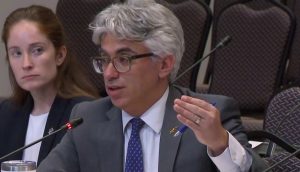Many forms of media around the country are seeing a surge in audiences as Canadians seek out both information and comfort. But many of those media companies are also asking if this increase in audience engagement will stick around after the crisis.
In the case of radio, Jay Chaney, partner and CEO at Broken Heart Love Affair, says coming out of this period of isolation, that sense of connection may form lasting bonds, for some, that extends well beyond COVID-19 and possibly train new behaviours in others.
“While we’re being isolated, we are craving a deeper connection to humanity – outside of our own families of course – which is why I am guessing that radio is enjoying a resurgence. I’m sure personal phone calls are up as well for the same reason,” says Chaney.
“While I don’t expect the numbers to stay where they are, I do suspect radio to enjoy higher listenership numbers post- COVID-19 and reap the benefits from buys and rates. Let’s not forget that media planners and buyers are also human beings and possibly rediscovering a sense of love for radio themselves.”
Brad Phillips, Corus Entertainment VP and head of FM radio, says listening patterns are changing and in some cases, share of some of stations is increasing in mid-day.
“People are looking for connection and to a certain extent, familiarity. Our station Q107 in Toronto, for example, plays familiar music and it seems people are gravitating towards comfort they have in personalities at our stations, comfort in the music we play.”
One of the things Corus has done is leverage Global News to put hourly 60-second news updates on all its FM stations because “sometimes people want to listen to their music and sometimes people just crave information.”
The stations are also doing what radio does best; cultivate a sense of community with listeners. From heartfelt personal messages from management about the loss of life in longterm care homes to radio workout routines for homebound people, stations are creating new features on the fly, some of which could possibly be attractive to sponsorship deals.
Things aren’t exactly rosy in the media business, but Phillips says he’s pleased with Corus stations’ stability.
“Stability” doesn’t necessarily apply to all aspects of the business; like all media, radio has had a difficult time directly monetizing its surge in audiences. There have been reports of temporary layoffs at radio companies such as Stingray, which cited a “dramatic drop in advertising”. While some stations have benefitted from big ad spend on the part of provincial governments – in the last two weeks, the Ontario Government has purchased nearly 4,000 radio spots in Toronto alone – and a slight push from growing D2C advertisers, the government’s ad spend is only temporary and, in many smaller markets, it’s not enough to compensate for the number of local advertisers that have had to pull back their ad spend, in some cases for good.
Alan Dark, SVP media sales, Rogers Media, says for brands that are able to spend, there’s an opportunity. “The smart ones will continue to invest because there’s also an opportunity to steal share from competitors in your subset. If others are going quiet, there’s always that opportunity to market and steal share.”
For its part, Dark says Rogers stations are doing a lot of branded content and live reads for client partners. “Times like now, creative ideas will always win out. Those that can continue to market are looking for ways to break through.”
He adds that younger demos that have not traditionally shown up in the research before seem to have discovered radio for the first time. “Most are probably consuming a stream through a product like Radioplayer where they can access 680 News live content whenever you want it. They likely never realized they could access those brands before through IP products. I think coming out of this, we’ll see some change in behaviour that will reinforce the value of those local brands.”
























